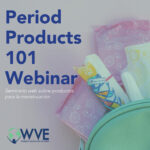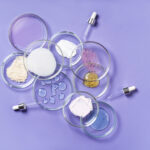How clean is clean?
Americans have become increasingly concerned about their exposure to germs and the diseases they may cause. Advertisements tell us of new and improved products which will protect our family’s health by killing germs found on every surface we may touch. Unfortunately, such advertisements fail to mention that many cleaning products contain chemicals that may actually be harmful to our health.
This is of particular concern to women and children. Recent studies point to a link between certain chemicals in some cleaning products and asthma and reproductive harm. That means that children, pregnant women, women trying to get pregnant, and persons with asthma are especially vulnerable to these chemicals.
Did you know:
. . . Women today are still doing over 70% of the housework in the average home.
. . . The cleaning industry in the U.S. employs about 3.4 million cleaning workers. Of those, women comprise nearly 90% of maids and housekeeping cleaners.
. . . Children are often more vulnerable to chemicals because their organs and immune systems are not yet fully developed, and certain chemicals may interfere with the development of their neurological, endocrine and immune systems.
Many household cleaners contain chemicals, some of which are toxic. These chemicals may cause short-term health problems like skin and eye irritation when you use them and they may have long-term health impacts as well.
Some chemicals in cleaning products have been linked to asthma, which is a growing chronic health problem. Several chemicals present in some household and industrial cleaning products have been identified as asthma triggers or are known to aggravate existing respiratory symptoms.
Some chemicals in cleaning products have been linked to reproductive harm, which includes changes in sexual behavior, decreases in fertility, menstrual changes, changes in the onset of puberty, cancers of reproductive organs, miscarriage, premature birth and other effects. Many scientists now believe that chemical exposure, even at very low levels, can have adverse impacts on the reproductive system.
Air fresheners deserve special attention because they may contain carcinogenic (cancer-causing) chemicals as well as chemicals associated with respiratory and reproductive harm. Unfortunately, little research has been done to specifically examine health risks
associated with the use of air fresheners that contain these chemicals.
We know very little about the long-term health impacts of chronic exposure to chemicals in household cleaning products. While additional studies are needed in order to fully ascertain the safety of using household cleaning chemicals over the course of a lifetime, the potential health impacts associated with exposure to certain chemicals present a significant cause for concern.
But, aren’t cleaning products regulated for safety?
- Tens of thousands of chemicals are used in American industry, placed in products, and released to our environment, with very little information on the potential consequences for human health and little oversight by the government.
- No legal requirements exist for ingredient labeling on household cleaning products. As a result, consumers have limited access to information about which products contain chemicals ingredients they may wish to avoid.
These chemicals also harm the natural environment.
- Chemicals in cleaning products can pollute the environment when sprayed in the air or washed down the drain, jeopardizing the health of our ecosystems.
- The United States Geological Survey found breakdown products of laundry detergents in 70% of North American streams. These chemicals can cause harm to fish, frogs, turtles and other aquatic life. Studies have shown that even low-level exposure has reduced the number of fertilized trout eggs and caused reduced embryo survival and abnormal embryos in another fish, the Japanese Medaka.
Actions you can take to protect your family from exposure to chemicals in household cleaning products:
- Look to see if the products you use are listed on the fact sheet, Household Cleaning Products Containing Chemicals of Concern, (or Appendix 1 of the report, Household Hazards). If your products are not on the list, use the 1-800 number on the product package to call the manufacturer. Ask for a list of product ingredients and encourage them to provide this information on product labels.
- While the presence of a chemical of concern in a product does not necessarily imply the product will cause harm, the potential health risks associated with exposure do present a concern. From a precautionary standpoint, you may wish to avoid products containing these chemicals.
- Make your own effective, non-toxic cleaning products using simple and inexpensive ingredients like vinegar and baking soda.
- Buy only from companies that list all product ingredients on the package.
- Tell Congress to require companies to disclose all ingredients in household cleaners on product labels and to replace toxic chemicals with safer alternatives.
- Read WVE’s fact sheet, “WHAT YOU CAN DO: 7 Simple Steps to Help Reduce Your Exposure to Toxic Chemicals from Household Cleaning Products.”





